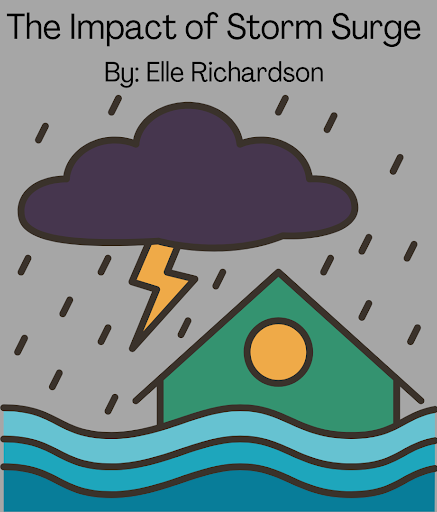The Impact of Storm Surge
October 5, 2022
As hurricane season nears its peak and Hurricane Ian ravages the coastline, the biggest concern for most isn’t the storm itself, but the resulting storm surge. Flying debris and wind can be counteracted with hurricane shutters or plywood and the lightning and rain can be avoided by taking shelter, but it is difficult to out-engineer a rushing swell of water. Because of this, storm surges are frequently the most destructive and deadliest part of a hurricane.

A storm surge is formed when an approaching hurricane churns the atmosphere above a body of water. This circular churning motion shuffles the water in the direction of the hurricane. When a hurricane is nearing shore, the movement of water is forced up by the shallowing of the ocean, causing the water to get pushed onto shore. This surge typically takes days to fully subside, but the damage done from it can last years.
Water is a powerful force. Weighing in at 62.4 pounds per cubic foot, water can crush roads, topple buildings, submerge cars, erode landscapes, and even take human lives. Add in the rapid movement associated with hurricanes and storm surges are recipes for disaster. It only takes six inches of fast-moving water to throw a full-grown adult off balance, so the 12-18 feet of water associated with Hurricane Ian has a dangerous capacity.

Hurricane Ian made landfall at a Category 4 and neared a Category 5 as it ravaged Marco Island and Naples. The infamous Cat 5 Hurricane Katrina brought a storm surge of 25 feet to New Orleans in 2005. This surge resulted in the deaths of 1,500 people.
Not only do storm surges pose an immediate threat, their lasting effects can scar a community for decades.








